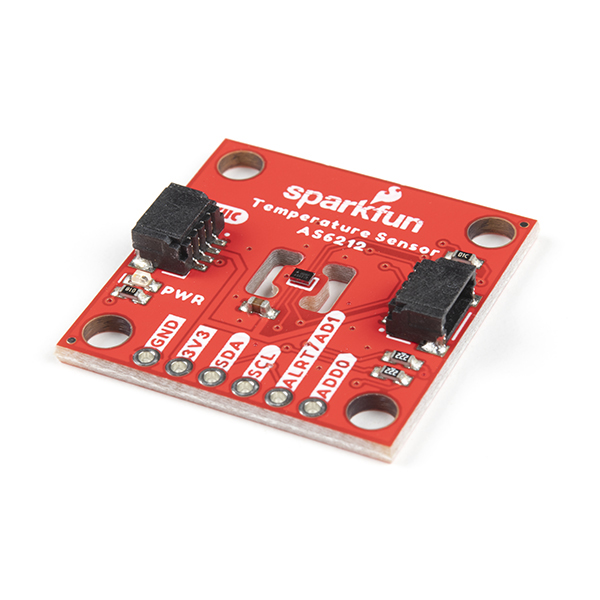Python module for the SparkFun Digital Temperature Sensor Breakout - AS6212 (Qwiic)
This python package is a port of the existing SparkFun AS6212 Qwiic Arduino Library
This package can be used in conjunction with the overall SparkFun qwiic Python Package
New to qwiic? Take a look at the entire SparkFun qwiic ecosystem.
This Python package currently supports the following platforms:
This driver package depends on the qwiic I2C driver: Qwiic_I2C_Py
This module documentation is hosted at ReadTheDocs
This repository is hosted on PyPi as the sparkfun-qwiic-as6212 package. On systems that support PyPi installation via pip, this library is installed using the following commands
For all users (note: the user must have sudo privileges):
sudo pip install sparkfun-qwiic-as6212For the current user:
pip install sparkfun-qwiic-as6212To install, make sure the setuptools package is installed on the system.
Direct installation at the command line:
python setup.py installTo build a package for use with pip:
python setup.py sdistA package file is built and placed in a subdirectory called dist. This package file can be installed using pip.
cd dist
pip install sparkfun-qwiic-as6212-<version>.tar.gzSee the examples directory for more detailed use examples.
from __future__ import print_function
import qwiic_as6212
import time
import sys
def runExample():
print("\nSparkFun Qwiic AS6212 Sensor Example 1\n")
myTempSensor = qwiic_as6212.QwiicAs6212Sensor()
if myTempSensor.is_connected == False:
print("The Qwiic AS6212 Sensor device isn't connected to the system. Please check your connection", \
file=sys.stderr)
return
myTempSensor.begin()
time.sleep(1)
print("Initialized.")
# Initialize configuration settings
# These settings are saved in the sensor, even if it loses power
# set the number of consecutive faults before triggering alarm.
# valid options: 1,2,3 or 4
myTempSensor.set_consecutive_faults(1)
# set the polarity of the Alert. (0:Active LOW, 1:Active HIGH).
myTempSensor.set_alert_polarity(myTempSensor.AS6212_ALERT_ACTIVE_LOW)
# set the sensor in Comparator Mode (0) or Interrupt Mode (1).
myTempSensor.set_interrupt_mode(myTempSensor.AS6212_MODE_COMPARATOR)
# set the Conversion Cycle Time (how quickly the sensor gets a new reading)
myTempSensor.set_conversion_cycletime(myTempSensor.AS6212_CONVERSION_CYCLE_TIME_250MS)
# set T_HIGH, the upper limit to trigger the alert on
myTempSensor.set_high_temp_f(78.0) # set T_HIGH in F
# myTempSensor.set_high_temp_c(25.56) # set T_HIGH in C
# set T_LOW, the lower limit to shut turn off the alert
myTempSensor.set_low_temp_f(75.0) # set T_LOW in F
# myTempSensor.set_low_temp_c(23.89) # set T_LOW in C
print("TLOW F: ", myTempSensor.read_low_temp_f())
print("THIGH F: ", myTempSensor.read_high_temp_f())
while True:
myTempSensor.set_sleep_mode(0) # turn sleep mode off (0)
time.sleep(0.250) # allow time to wake up and complete first conversion
temperature = myTempSensor.read_temp_f()
# Check for alert
alertRegisterState = myTempSensor.get_alert_status() # read the Alert from register
# Place sensor in sleep mode to save power.
# Current consumption typically ~0.1uA.
myTempSensor.set_sleep_mode(1) # turn sleep mode on (1)
print("Temperature: ", temperature, "\tAlert Register: ", alertRegisterState)
time.sleep(1)
if __name__ == '__main__':
try:
runExample()
except (KeyboardInterrupt, SystemExit) as exErr:
print("\nEnding Example 1")
sys.exit(0)






